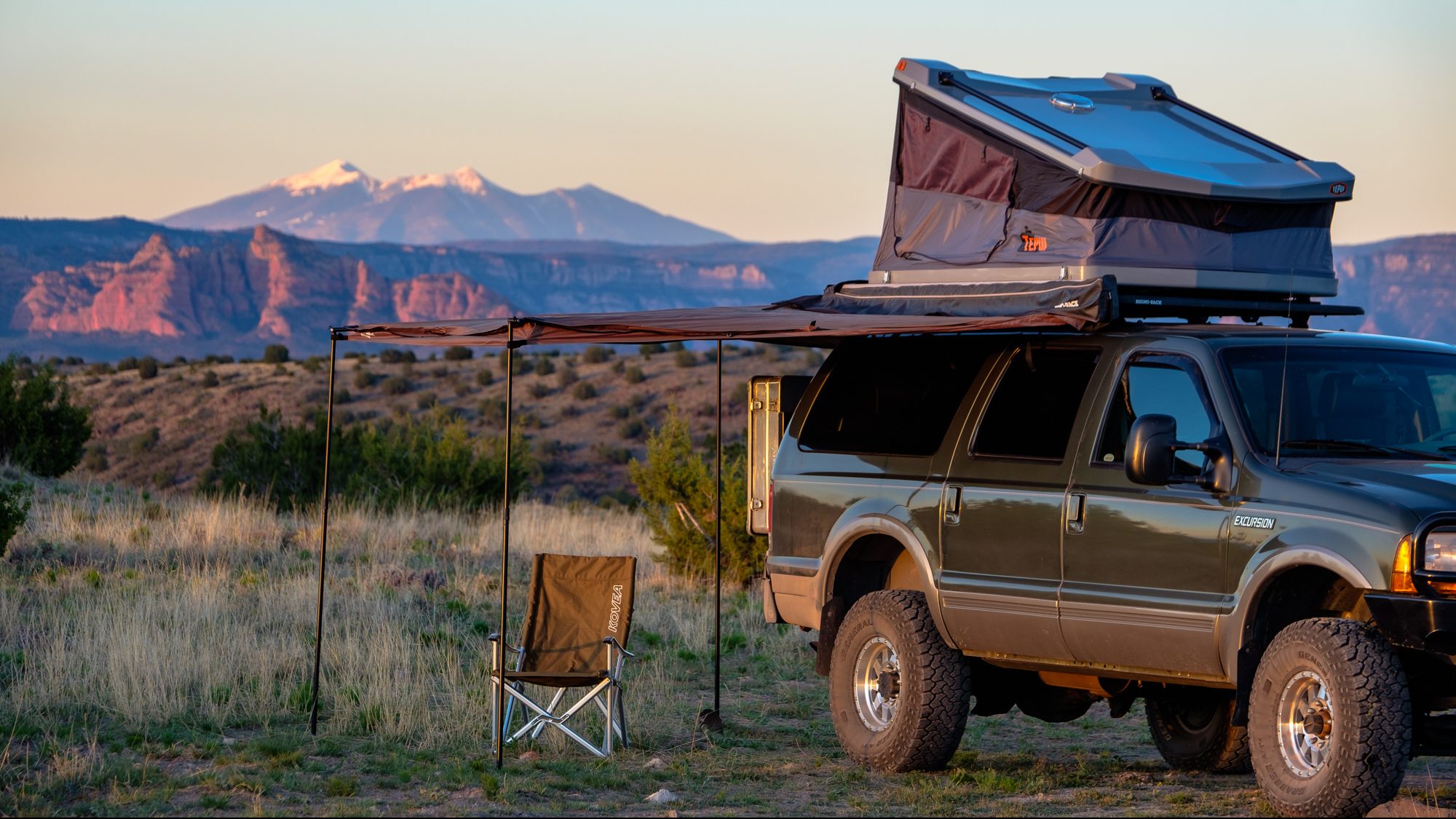DayStar Cradles
Airbags are a rather hotly debated subject in the overland space, and there are good arguments on both sides of the fence. Personally, I’m a firm believer that you should never rely on them for your regular driving conditions, as a vehicle’s suspension should be catered toward its most common operating weight, but airbags do have their place. For example, my Old Man Emu suspension is balanced to give the Excursion a comfortable ride with two to four occupants and all of their gear, but I occasionally tow a large trailer, and that would overload the suspension causing unsafe handling characteristics. This is where airbags come in, and when Daystar Cradles become a necessity.
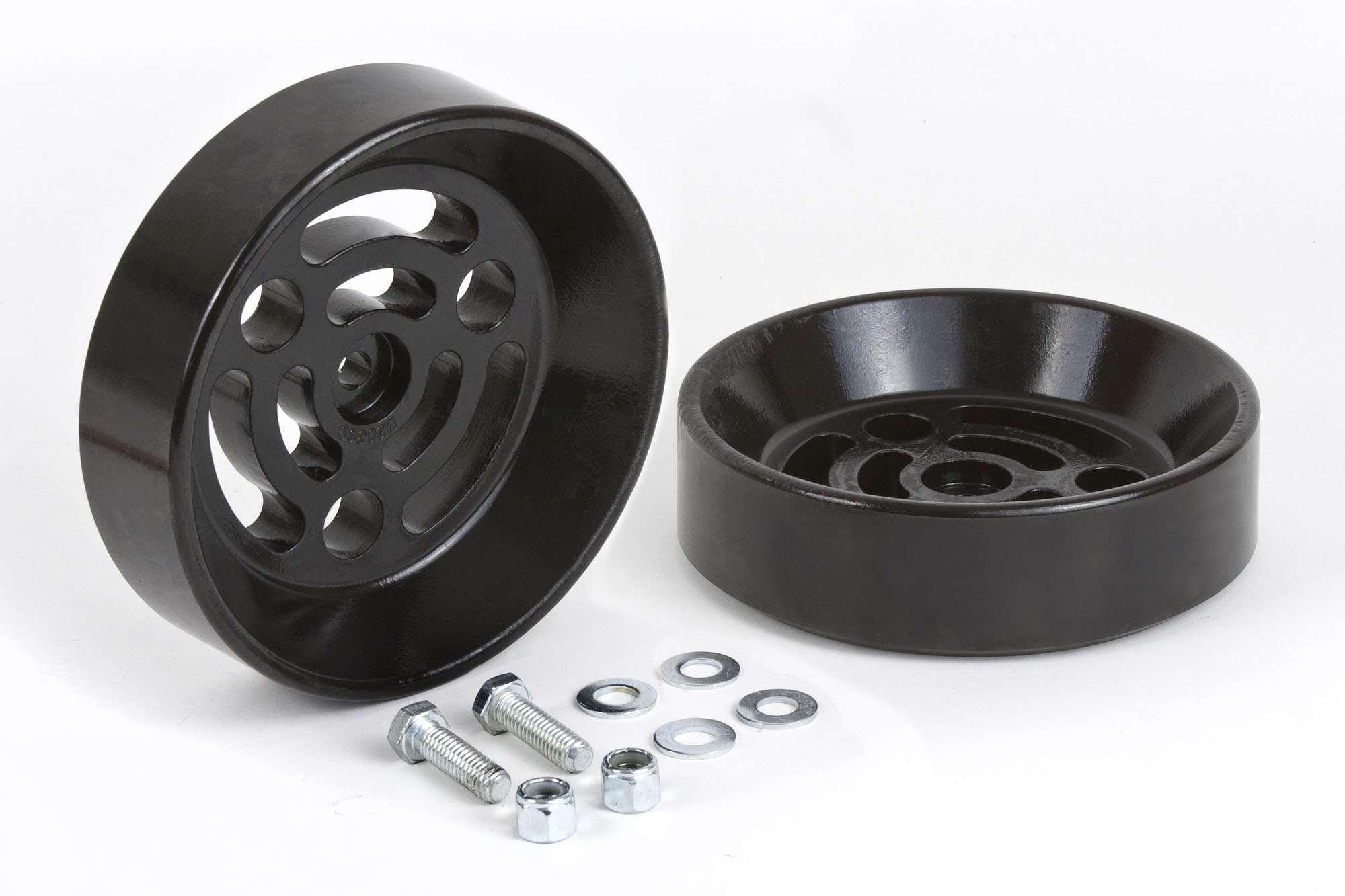
What We Like
Traditionally, airbags are attached between the frame and axle and use air pressure to reduce the load on the suspension. This restores the vehicle to a level ride height and gives the truck more predictable handling characteristics when under a heavy load. The main problem with this setup though is that as the axle drops away from the frame during articulation, the airbag will limit the total travel or simply tear under pressure. The Daystar cradle eliminates this problem by removing the bottom attachment point and replacing it with a high-density polyurethane cup that the airbag can rest on. The raised edges funnel the airbag back into position when the axle returns to neutral and allows for full extension and compression of the suspension. Installation is easy, and the price point is very affordable.
What We Don’t Like
I really don’t have anything bad to say about this cradle. It is simple, affordable, and effective.
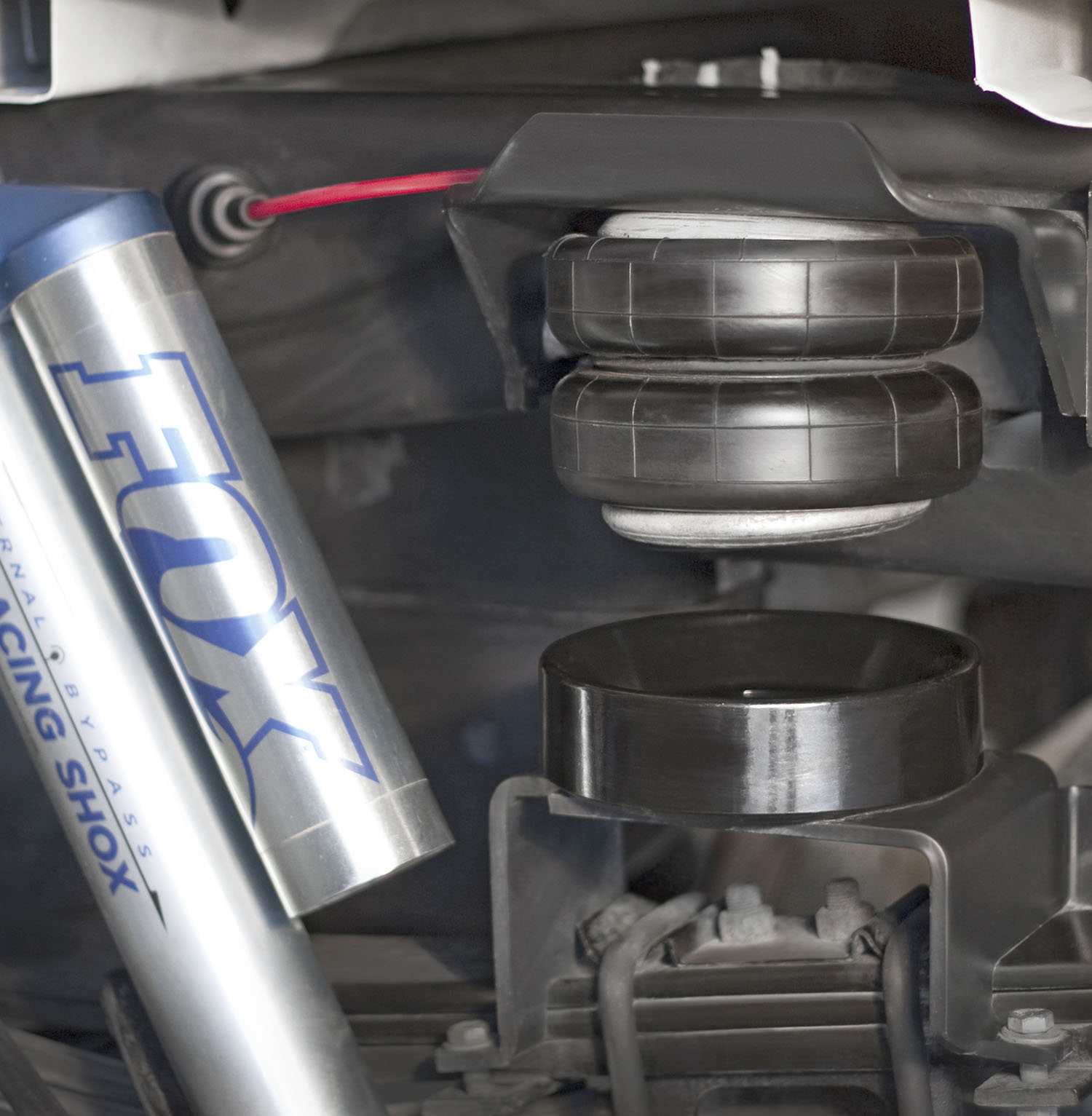
Conclusions
If you need to run airbags, you’re going to want a Daystar Cradle system to maximize your vehicle’s articulation and your airbag’s reliability.
Pricing is usually around $70, and you can learn more about the product on Daystar’s website here.
Kovea Field Luxury Chair II
Camp chairs are one of those subjects heavily biased on people’s tastes and needs. Some prefer lightweight Helinox chairs, others prefer the wood and canvas of a traditional campaign chair, and still more desire something in between. Personally, I’ve come to love different styles of chairs in different situations. For lightweight trips, I carry the original Helinox, and for solo adventures in my truck, I carry a Nemo Stargaze. But now another contender has come into the mix, and I must admit I’m falling for it. It’s called the Field Luxury chair and is made by the up and comer Kovea.
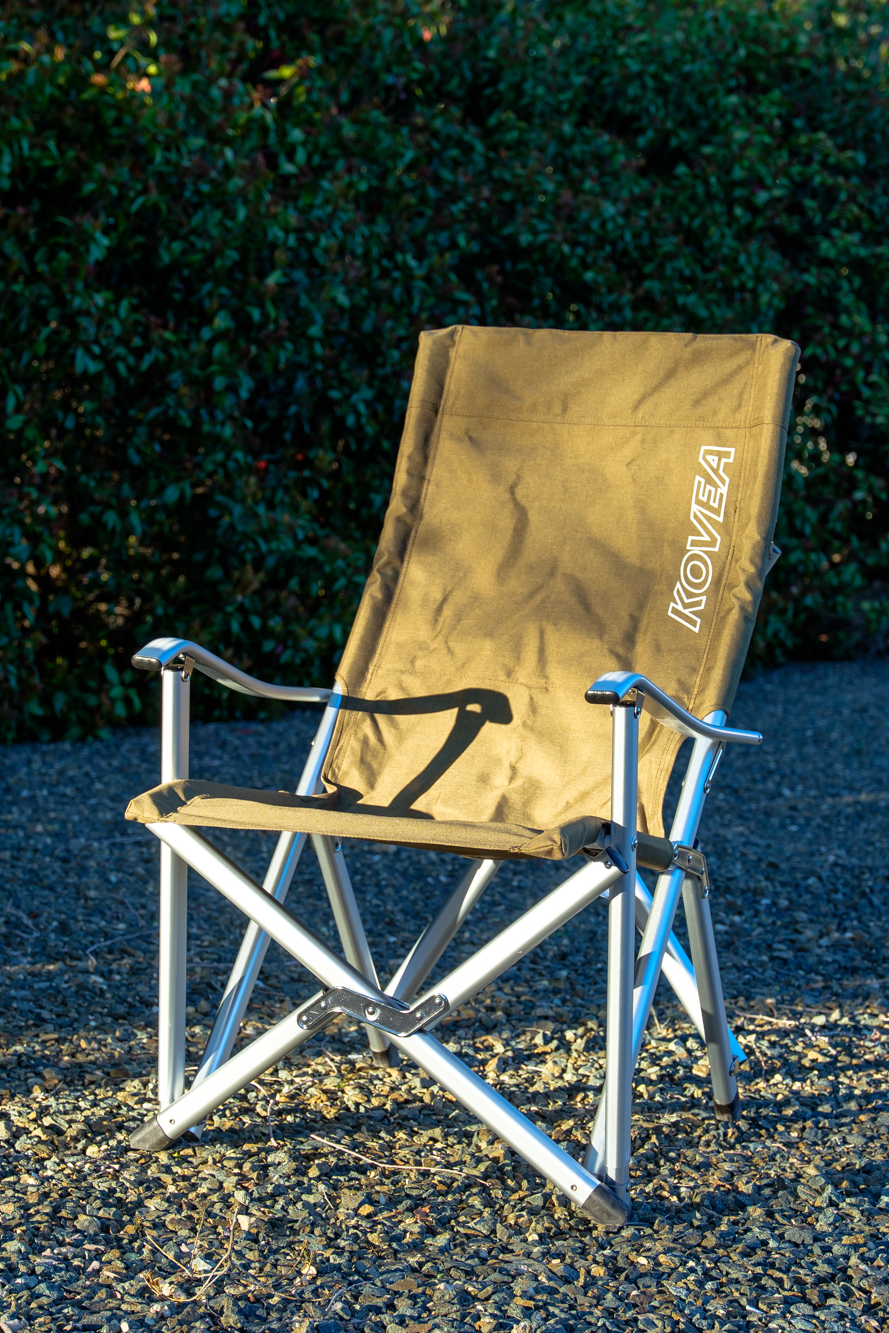
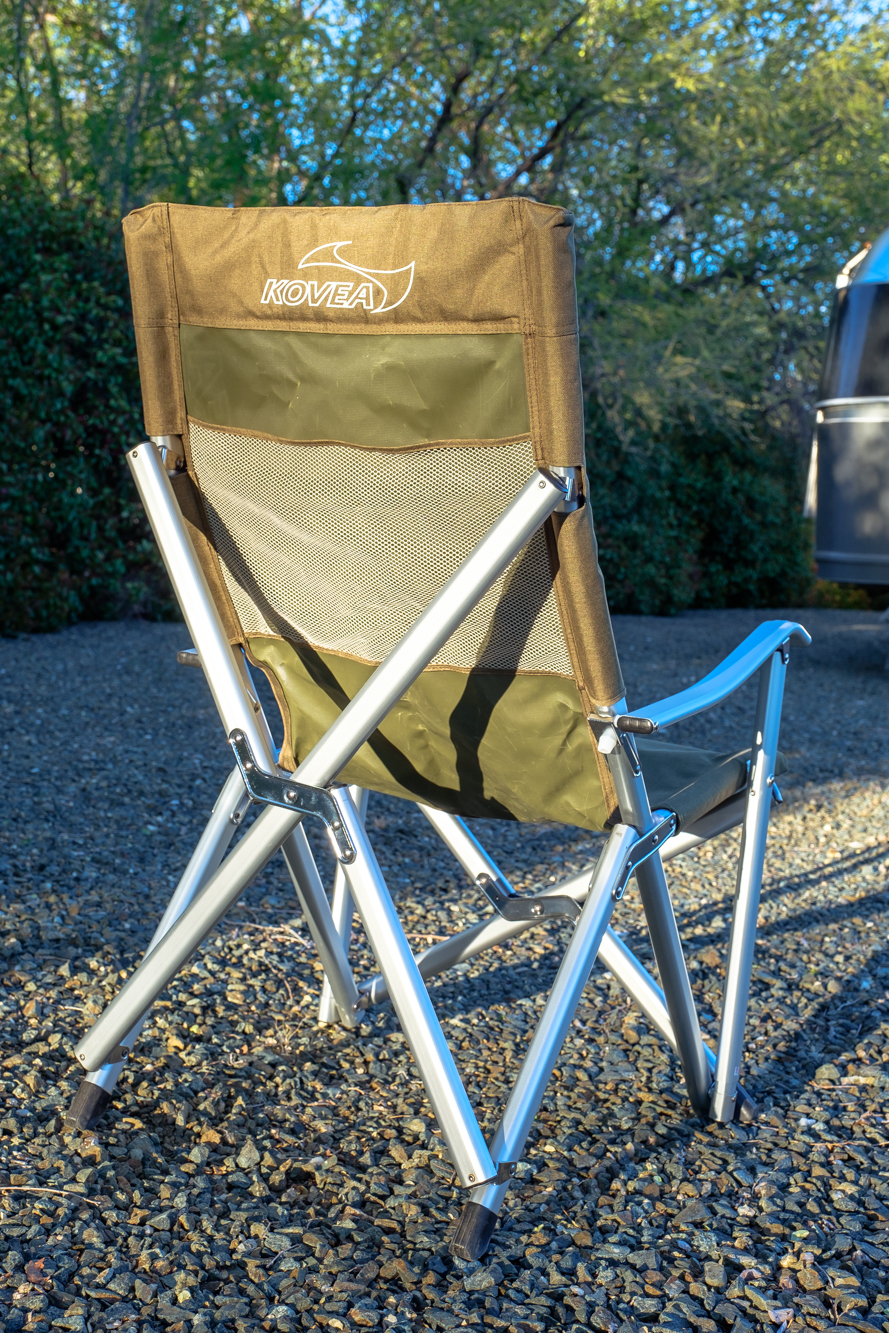
What We Like
The field luxury chair is made from aluminum tubing with steel brackets and connecting pins for durability. The design is classic yet modern, an interpretation of the Tripolina campaign chair invented by Joseph B. Fenby in 1881. The 600D polyester fabric has a relaxed drape over the chair which makes it comfortable, but not so relaxed that it induces bad posture and therefore back pain when sitting too long. The height is perfectly balanced, higher than a beach chair but lower than your standard home or office chair.
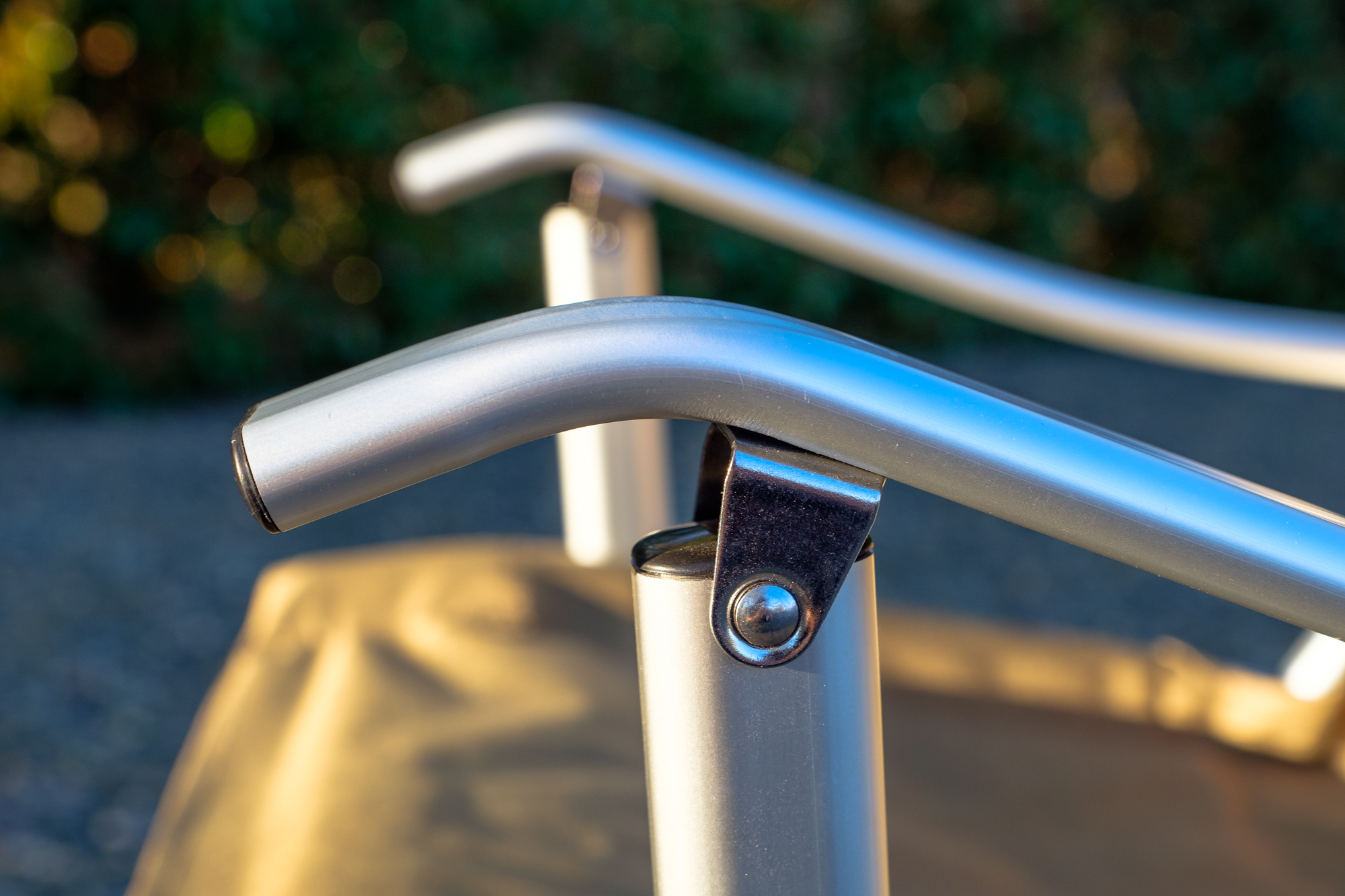
Folding or deploying the field chair is a cinch, requiring just one single motion to open or close it. In a day and age where half of the gear we own requires 10 steps to set up or break down, I find this very refreshing. The chair carries a 280-pound limit for the occupant, but I have tested it with up to 340 pounds without seeing any issues. I wouldn’t recommend putting that weight in it all the time of course, but rest assured it won’t give out beneath you when the dog or kids jump in your lap. Finally, I have to say that I love this product’s aesthetic. Even though I know that doesn’t technically matter, deep down I still like gear that looks good, and the Field Luxury Chair certainly does.
What We Don’t Like
Of course, the Kovea chair isn’t perfect. For starters, the trade-off for the easy folding design is a large packed footprint—5.9 x 7.8 x 45 inches to be exact. That takes up some serious real estate in any vehicle. I also felt that the chromed hinges and pins looked and sounded a little cheap. They tend to rattle when going down heavy corrugations and fell short of what this chair could have been for the price. Which brings us to the final drawback of this product, the cost. At an MSRP of $199, the Kovea Field Luxury Chair certainly embraces the luxury price point its name suggests. We’ve bought more expensive chairs before, but not much more expensive.
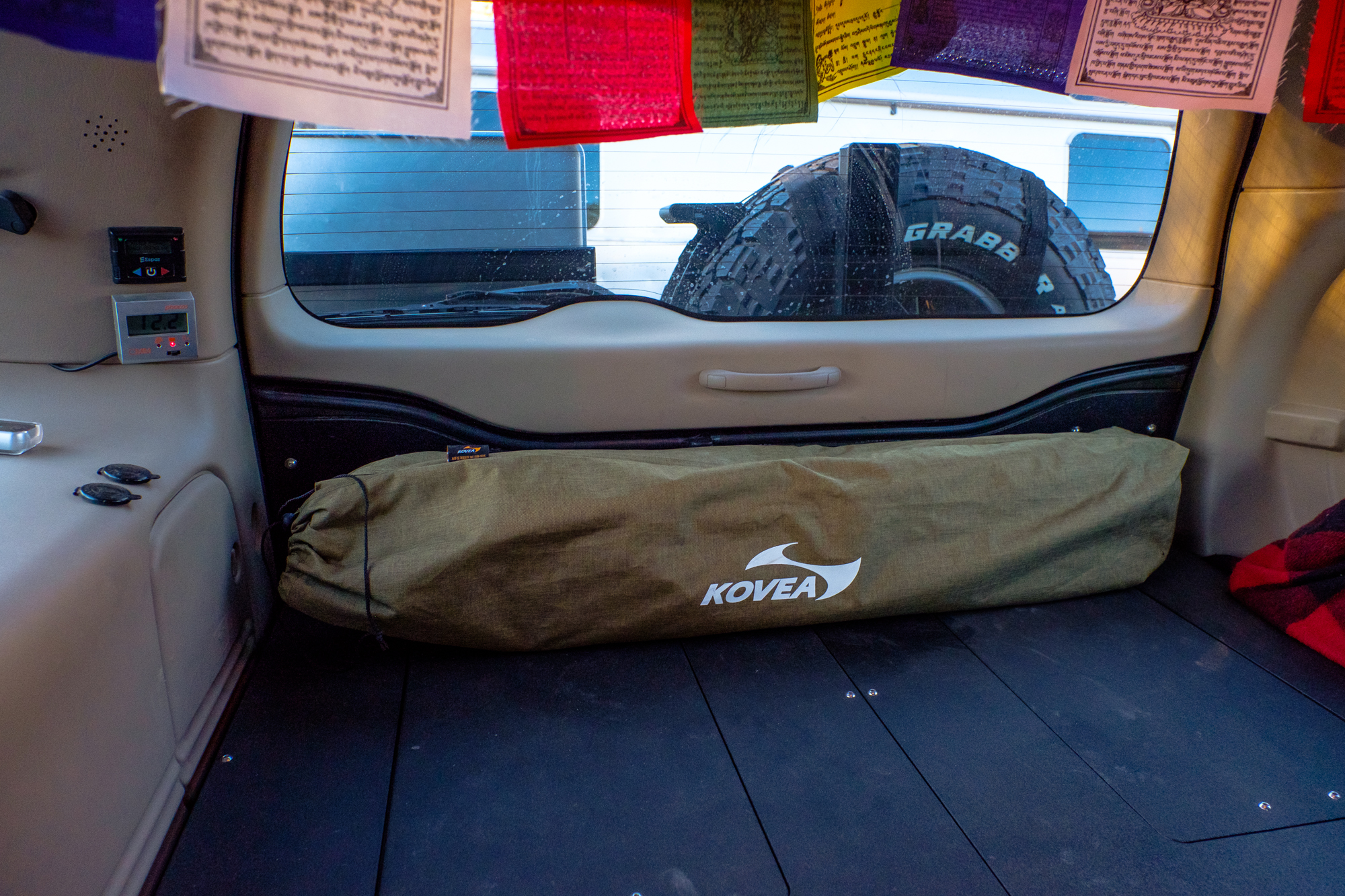
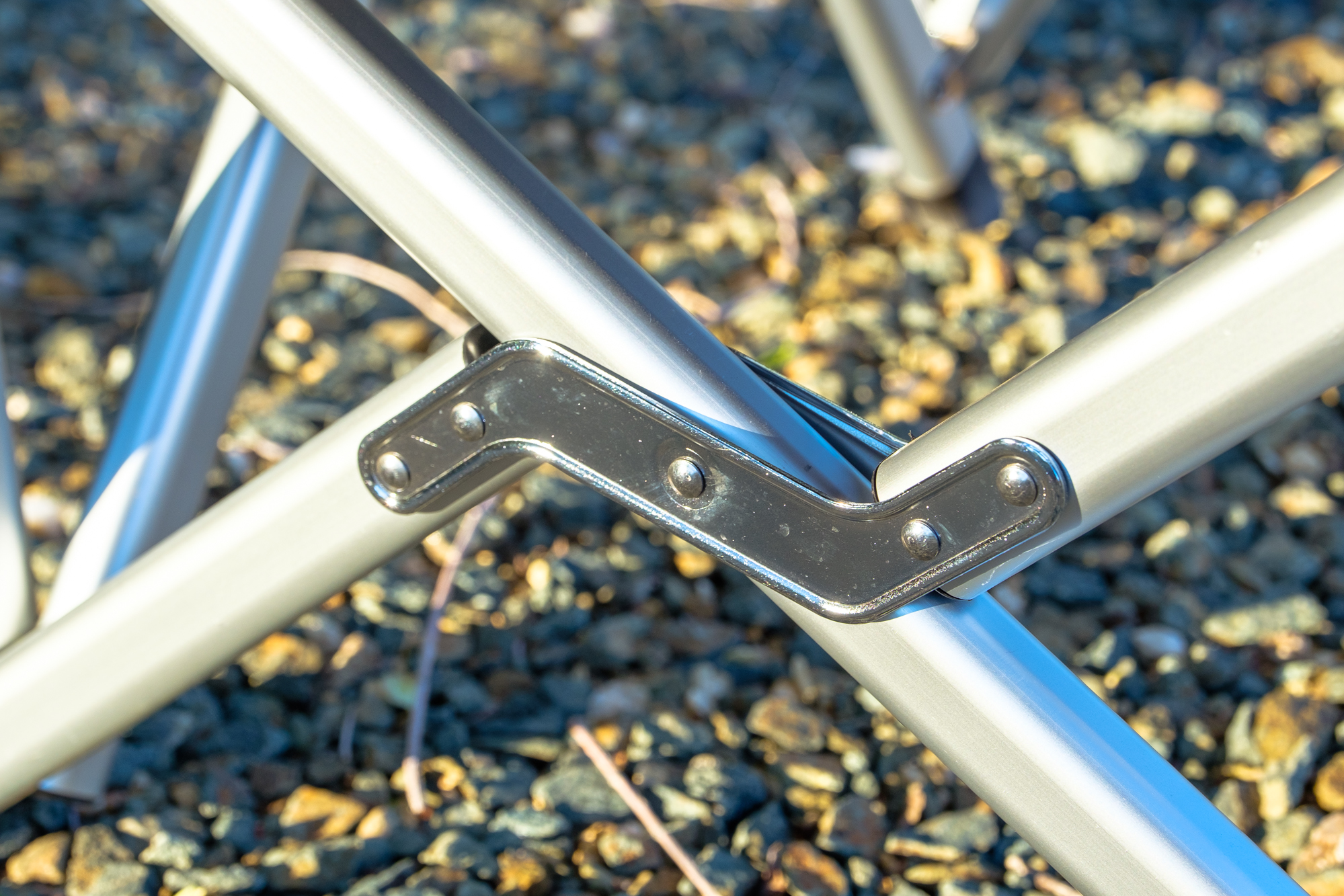
The Kovea Field Luxury Chair is a beautiful design that is comfortable to sit in and easy to use. By any standard, it is a great camp chair, however, I am not sure it’s a $200 great camp chair. To fetch that kind of money, the quality needs to be exceptional everywhere, or it needs to redefine the way you think about sitting as the Stargaze has; or possibly both. The Field Chair just isn’t quite there. To learn more, visit the Nomadica website here.
Front Runner Spare Wheel Step
Whether you need to secure some cargo, get a better angle for a photo, or climb into your rooftop tent, accessing your roof rack is pretty important. Unfortunately, it can also be difficult when your truck or SUV is lifted and on larger tires. You’ll probably find yourself stepping onto the door sills, standing on a seat, or balancing precariously on a tire while trying to address the task at hand. If you’re thinking there has to be a better way, you’re right, and it’s called the Spare Wheel Step by Front Runner. I picked mine up just over a year ago, and have since subjected it to all kinds of weather and uses.
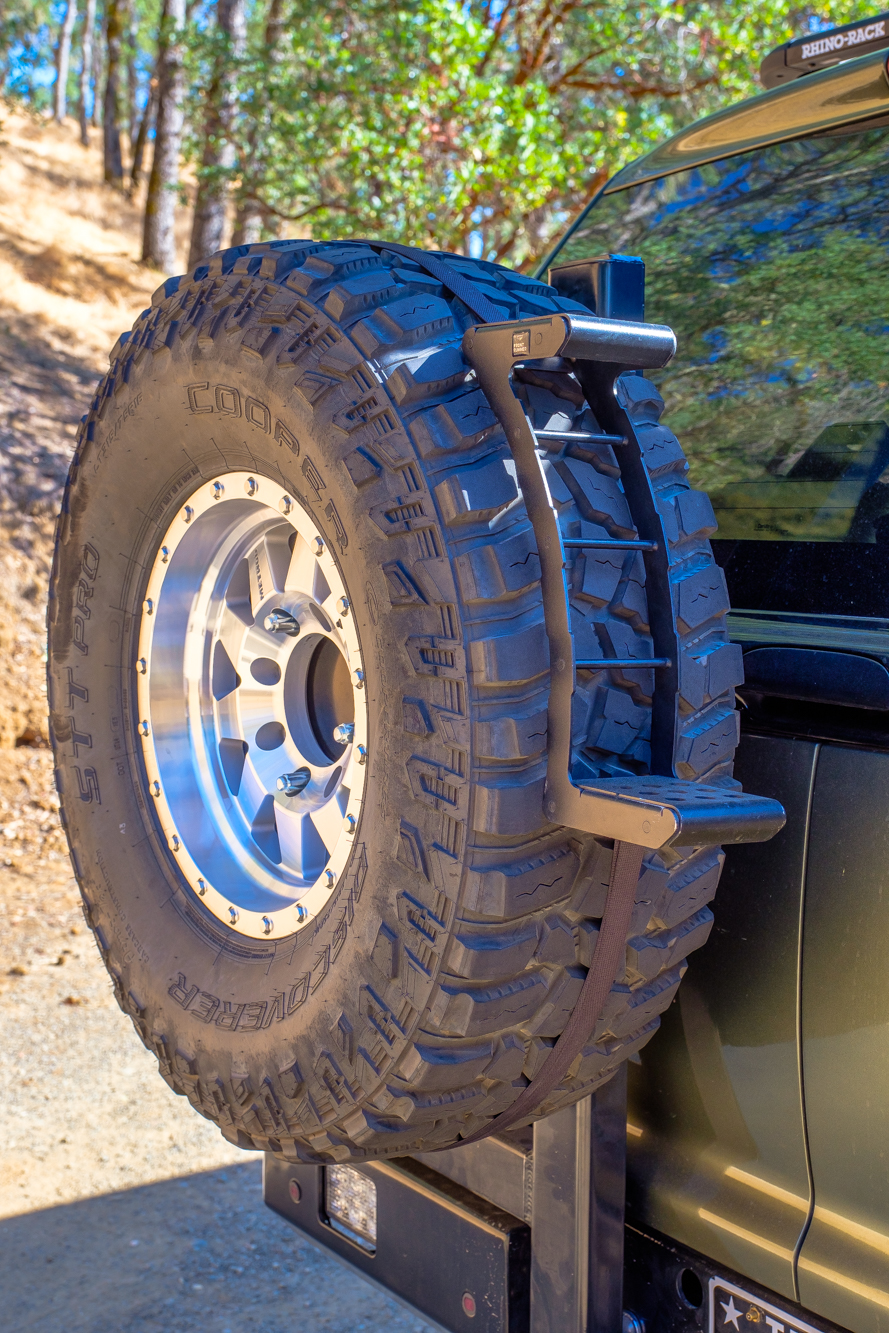
What We Like
Installation was straightforward using an endless ratchet strap double-backed on itself. This tightens the step against the rubber, allowing it to grip and support the weight of a full-grown adult. At 6’4” this was obviously a concern of mine, but when properly tightened I had no issues with it slipping or moving around. Still, I highly recommend having a ladder next to the spare tire the first time you step onto this product so that you can gradually put your full weight on it to ensure proper installation. If you screwed something up, you really don’t want to find out the hard way.
The step itself weighs 6.6 pounds and is constructed from black powder-coated 3-millimeter 3CR12 stainless steel, so you don’t have to worry about it rusting out. It features one low and one high step, as well as some crossmembers which work nicely as grab handles for really tall vehicles. I love the look and the construction, but not nearly as much as I appreciate how easy it made accessing my rack. At nearly 8 feet tall, my Excursion’s roofline might as well have been the moon, but with the step, I climb up all the time—for anything from watching a sunset to securing a paddle board.
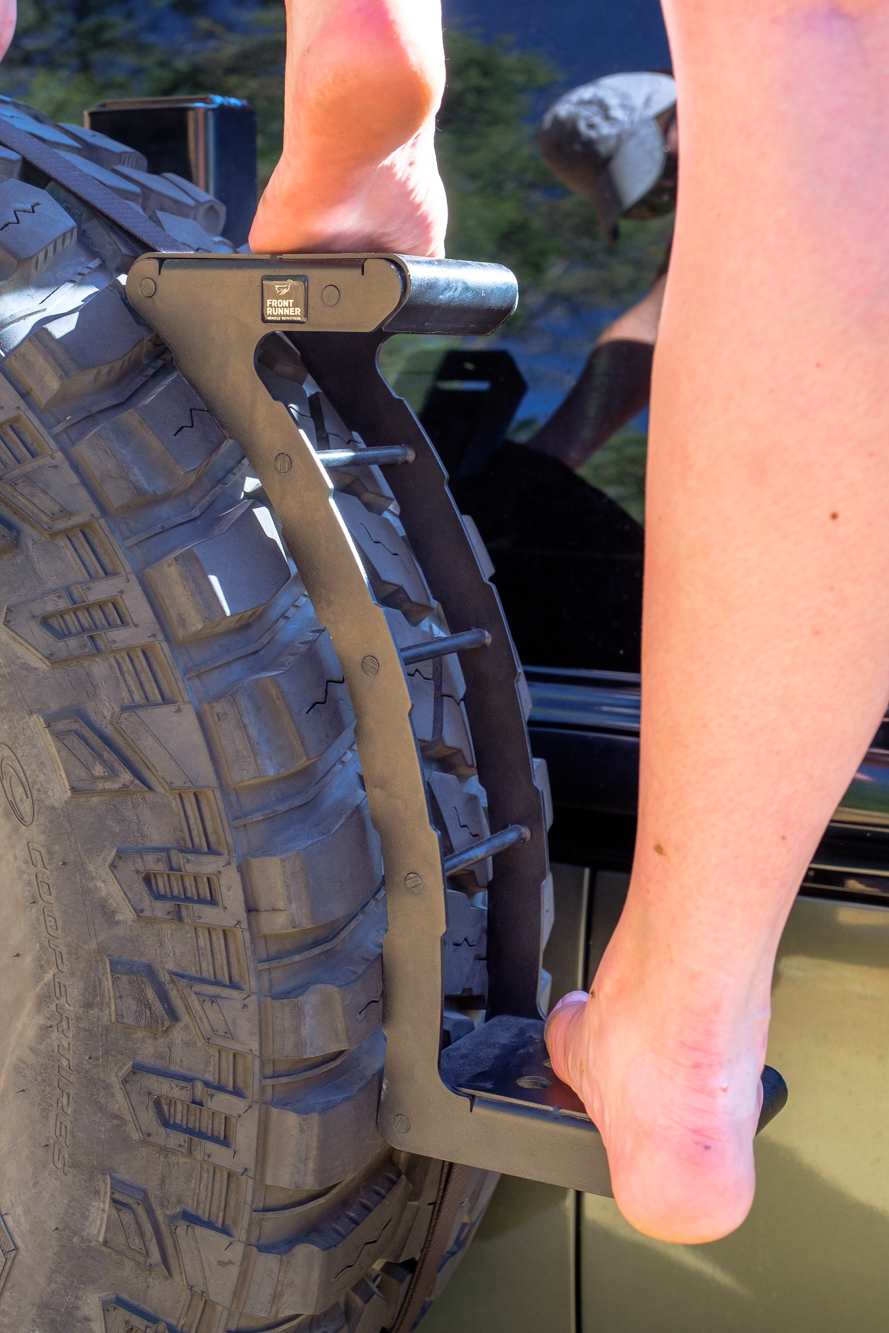
What We Don’t Like
I wish the step surface had some grip tape or something similar to give you more traction in wet or snowy conditions since the metal can become slippery. I would also like to see a bit of a longer strap provided. As it stands now, Front Runner claims the strap can accommodate between a 24-inch and 35-inch tire, but it barely worked for the 35-inch one. You can source a longer strap for 37s, but the step will not work for any tire larger than that as the shape of the step itself will not match the curvature and thus it will lose grip on the rubber.
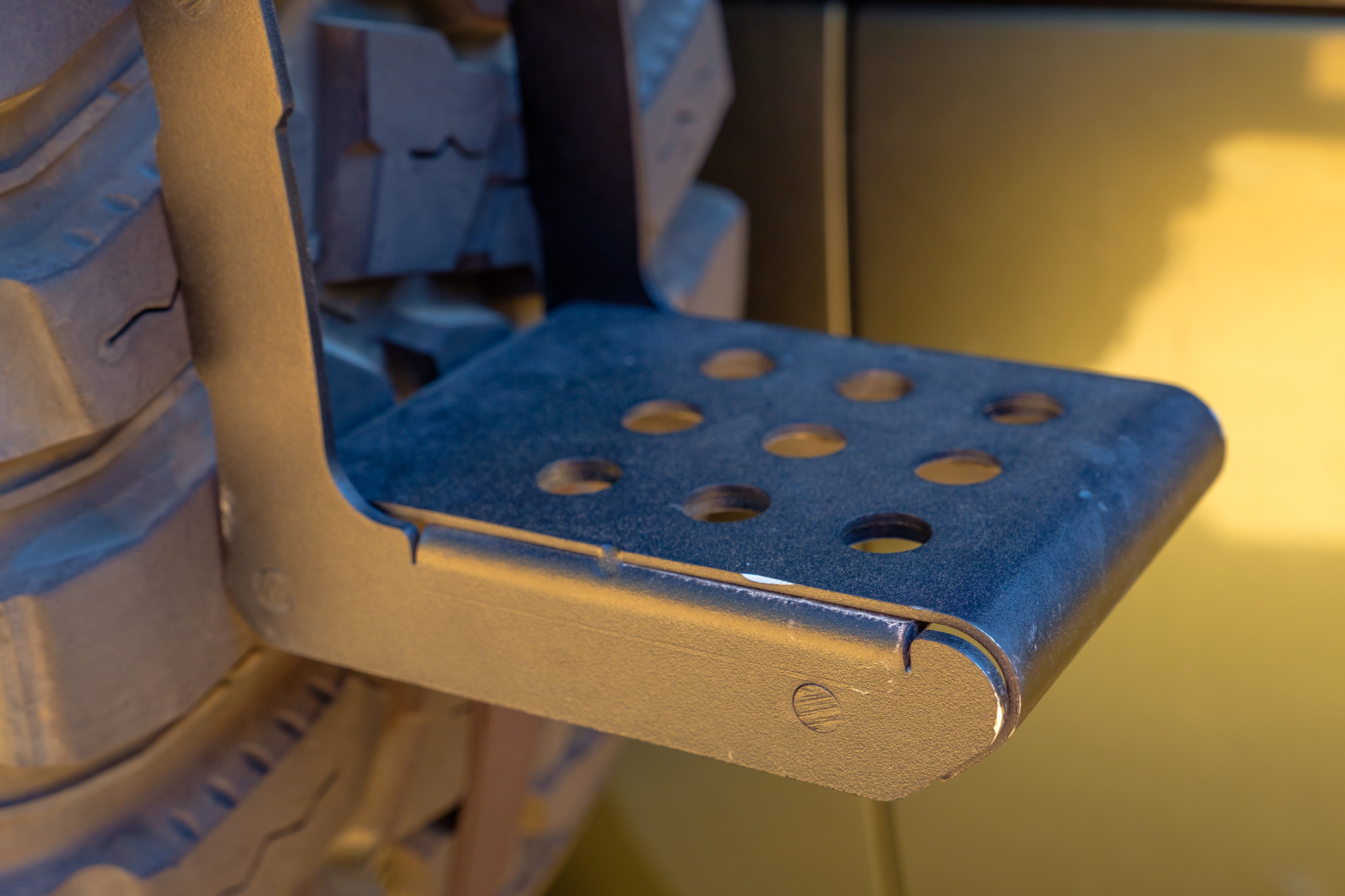
Conclusions
If you’re looking for a way to make accessing your roof easier, or want to ditch your RTT’s ladder, the Front Runner Spare Wheel Step is a stellar choice.
The step retails for $169, and you can learn more here.
ArchiTec Glenbrook Shirt
After learning about ArchiTec last year, we decided to try out a few pieces of their clothing to see how they wore over the long haul. Our first story, which includes some background information on this sustainable US-based business, covered their Carson hoodie. It definitely fit their unofficial motto of “build cool s***, and less of it” and became a staple of my travel wardrobe. I was still looking for a shirt that was comfortable to wear in the field, as well as to dinner though, and I found it in the form of their Glenbrook merino work shirt.

What We Like
The Glenbrook combines the anti-wrinkle, anti-smell properties of technical travel clothes with the fit and appearance of a well-tailored shirt. It is made from a 60 percent merino wool and 40 percent organic cotton 200 GSM fabric that allows the garment to feel light and comfortable but still stand up to the abuse often sustained on the road. I loved the look and feel of the fabric, as well as the athletic cut that seems to be so rare in travel clothes these days, but most of all I loved how it performed on trips. During our testing cycle, I wore this shirt regularly in all sorts of conditions, and it somehow managed to appear, and even smell fresh, day after day. Well, mostly fresh. This versatile shirt enabled me to spend the morning shooting photos on the trail, and then roll into a restaurant at night without worrying about changing or showing up underdressed. There’s also the bonus of supporting a small US business focused on sustainable practices but that’s just icing on the cake.
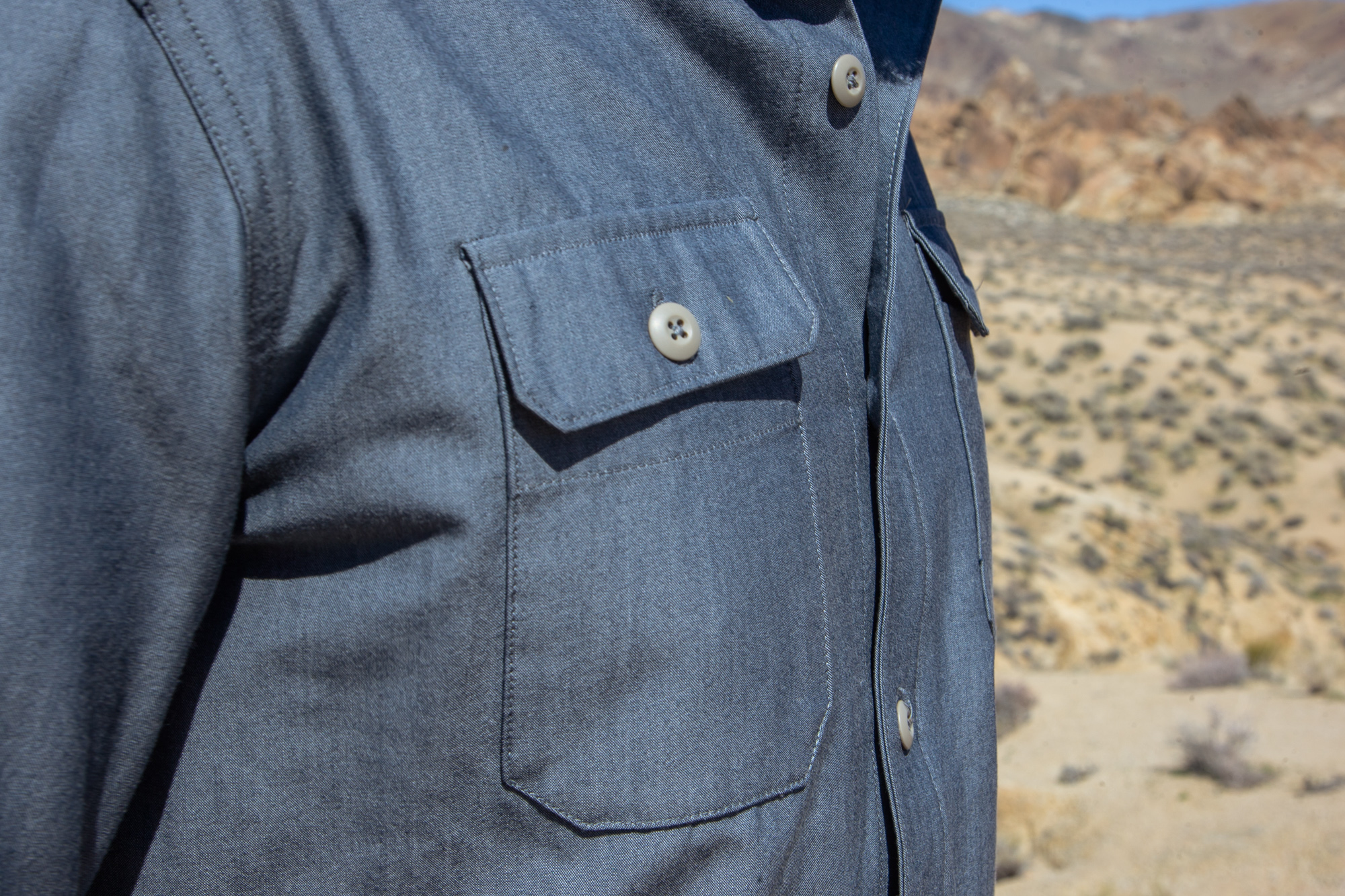

What We Don’t Like
I can only fault the Glenbrook on two fronts, or one and a half really. First off, you won’t want to just throw it in the laundry with your other clothes. Duh, I know, but occasionally while traveling I have been forced to wash and dry everything together when on a time crunch, and this shirt will respond by shrinking accordingly. This isn’t really the Glenbrook’s fault, it’s just the nature of the fabric, which is why I can only half fault it. The second issue is the price. Technical and high-end clothing usually costs an arm and a leg, as made clear by brands like Patagonia, Filson, or Arc’teryx, but $192 is still $192, and that’s rather pricey.
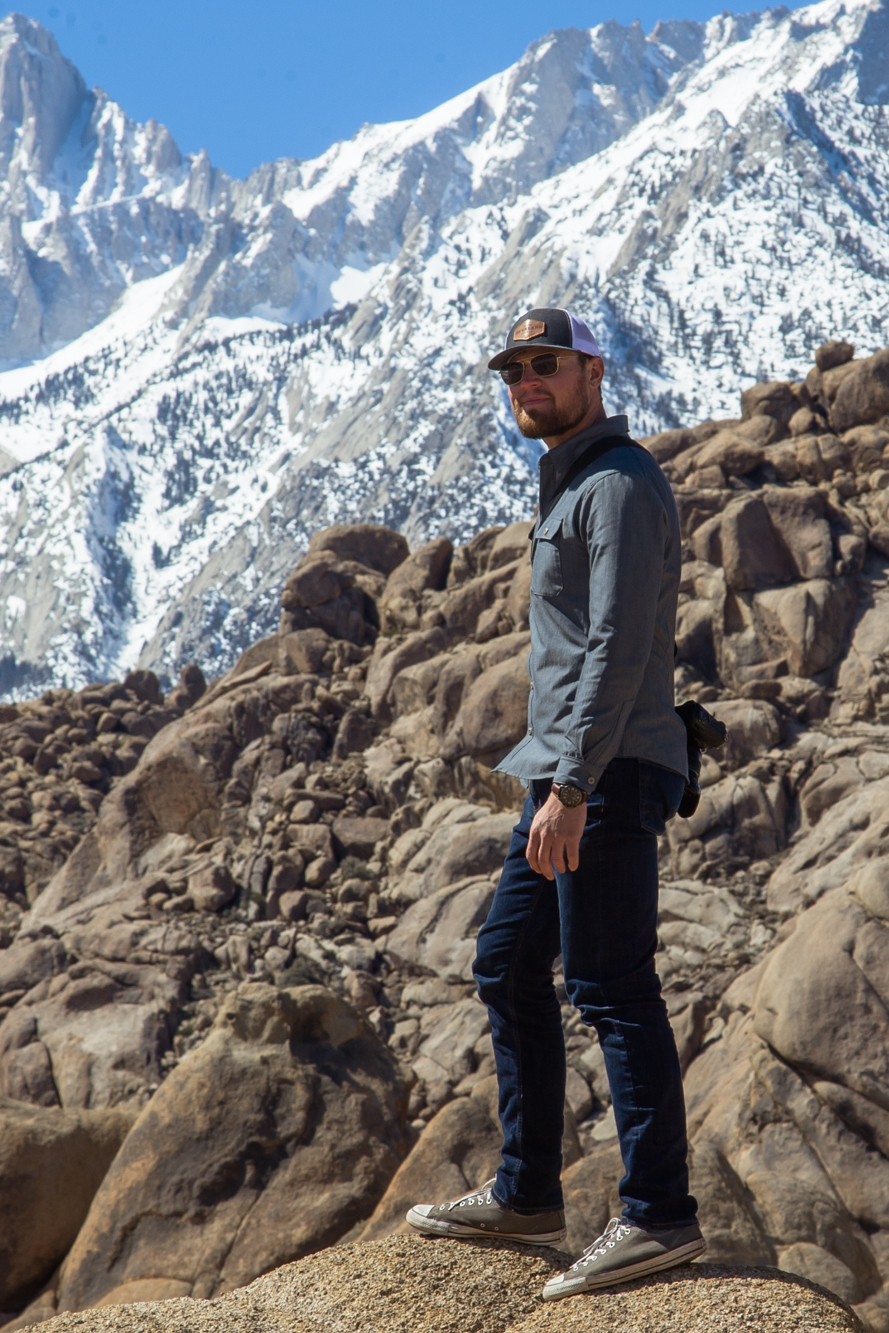
Conclusion
If you’re looking for a travel shirt that looks great at the airport or restaurant while still holding up to life in the field, the Glenbrook is worth checking out. To learn more, visit their website here.


